Highlight the beauty of your hibiscus (also known as rose mallow) plants by choosing the best companion plants for hibiscus. While this plant’s flowers are simply spectacular, they only bloom in midsummer. Keep the beauty year-round when you also choose the best companion plants to bring out the best that hibiscus has to offer. Choose some companions that flower after the hibiscus blooms dry out so that there is always something blooming in your space.
Companion plants for hibiscus include groundcovers like sweet alyssum, ornamental sweet potato vines, caladium, and bee balm, as well as flowering plants like daylilies, crape myrtle shrubs, Japanese anemones, hydrangeas, peonies, geraniums, coneflowers, ironweeds, and spider flowers.
Although it looks like you can plant anything alongside hibiscus, that is sadly not true. Certain plants will fight for resources or eat up valuable nutrients that your hibiscus needs to thrive, resulting in dead or dying plants. So, read on if you want a stunning garden from spring right into fall each year!
How To Choose Companion Plants For Hibiscus

Image Credit: Depositphotos.
Hibiscus companion plants can be a great addition to your garden. However, selecting a plant that is not invasive, will not compete for resources, and prefers a sunny to a partially shaded area, is important. Hibiscus plants are known for their large, beautiful flowers but they can also pair well with the right companion plants.
When choosing Hibiscus companion plants, it is important to consider the size and growth habits of the hibiscus, as well as the needs of the other plants. Hibiscus are generally heartier than most other plants, so they can be a good choice for companions that need a little extra help. For example, hibiscus can help to support viney plants like morning glories and sweet peas. They can also provide shade for sun-sensitive plants like ferns.
It is also important to consider the water needs of the plants. Hibiscus requires frequent watering, so it is important to choose companions that have similar watering needs. Plants that prefer drier conditions, such as cacti and succulents, may not be the best choice.
Overall, when selecting Hibiscus companion plants, it is important to consider the needs of both the Hibiscus and the other plants. With a little planning, you can create a beautiful and thriving garden.
While Hibiscus plants are hardy and can thrive in relatively cold climates, their soil should be consistently moist. So, choosing a companion plant that will retain the soil’s moisture yet add a splash of color is ideal. Let’s take a look at some options you might consider for your own garden or landscape.
Hibiscus plants need to be pruned to keep producing beautiful blooms. Here’s how to prune a hibiscus plant.
1. Sweet alyssum (Lobularia)
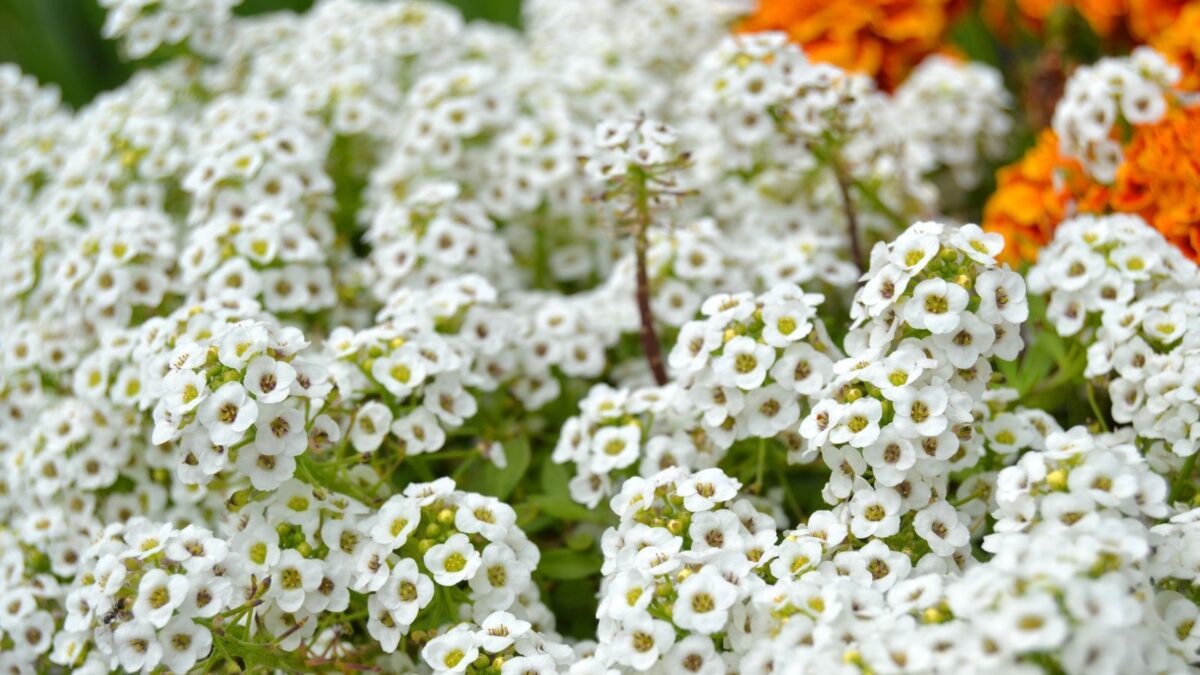
Image Credit: Depositphotos.
The aptly named Sweet Alyssum is a fantastic groundcover that produces a heady sweet fragrance on hot summer days, and you won’t need much as they spread quickly.
Sweet Alyssum is an ideal companion plant as it prefers the same growing conditions and will still be in great condition when Hibiscus blooms appear in the height of summer each year.
2. Ornamental Sweet Potato Vine (Ipomoea)
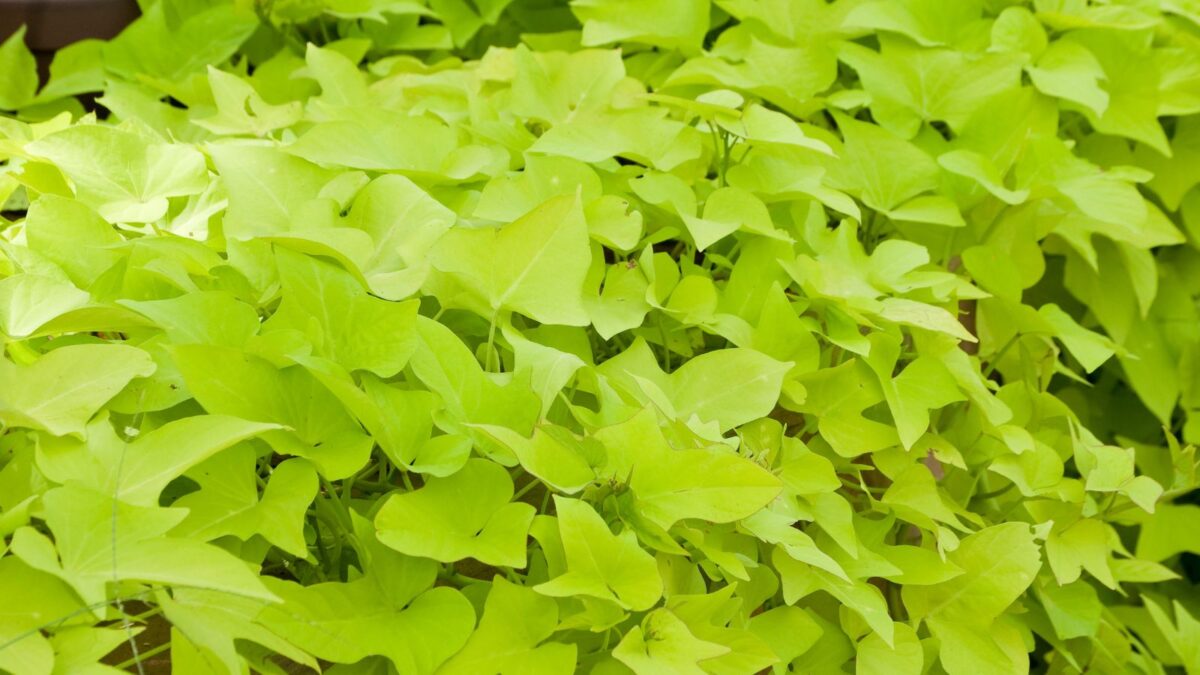
Image Credit: Depositphotos.
While the Ornamental Sweet Potato Vine is mostly used for hanging baskets or containers, it’s ideal as a groundcover companion plant as its textured leaves contrast beautifully with vivid Hibiscus flowers, especially dark-purple-hued blooms.
Most importantly, they are heat-tolerant and protect your Hibiscus plant from invasive weeds that will sap their energy, and potentially yours, as weeding is not the most fun aspect of gardening.
3. Elephant Ears (Caladium)
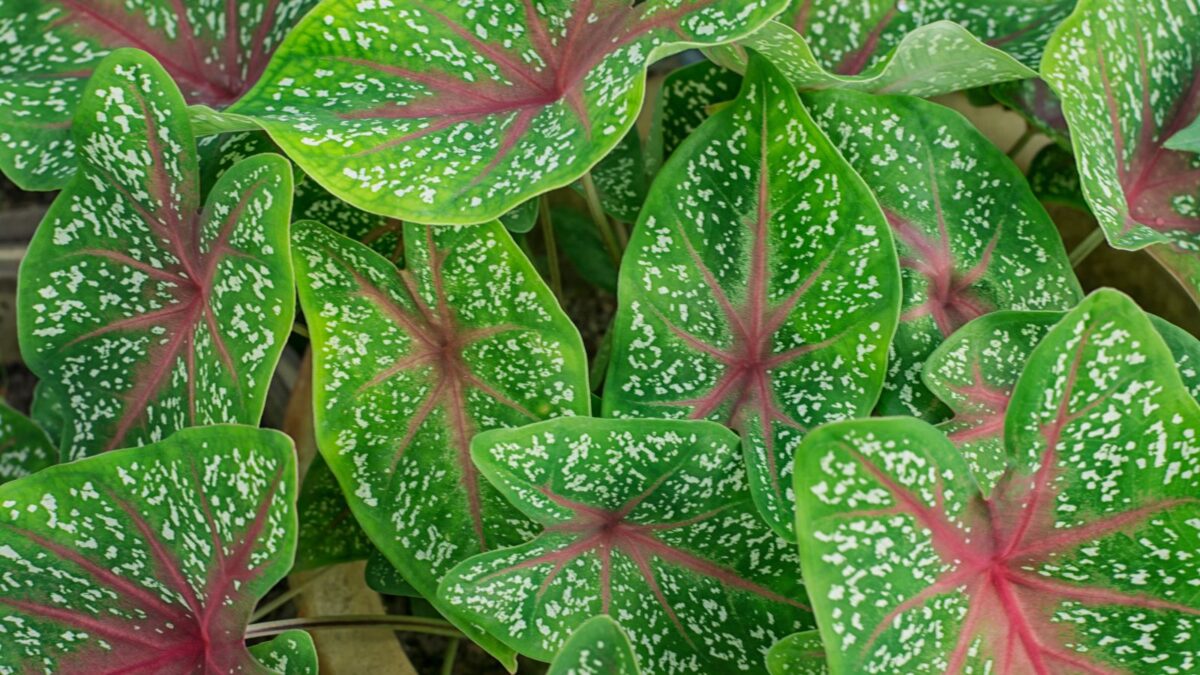
Image Credit: Depositphotos.
Tropical Caladium is a great companion for Hibiscus plants, especially if you want a mini rainforest since they can grow in shady or sunny areas, which makes them ideal for those areas around the plant that are less sunny.
Caladium features striking foliage with red centers that contrasts beautifully with Hibiscus flowers to create a lush tropical garden.
4. Petite Delight Bee Balm (Monarda didyma)
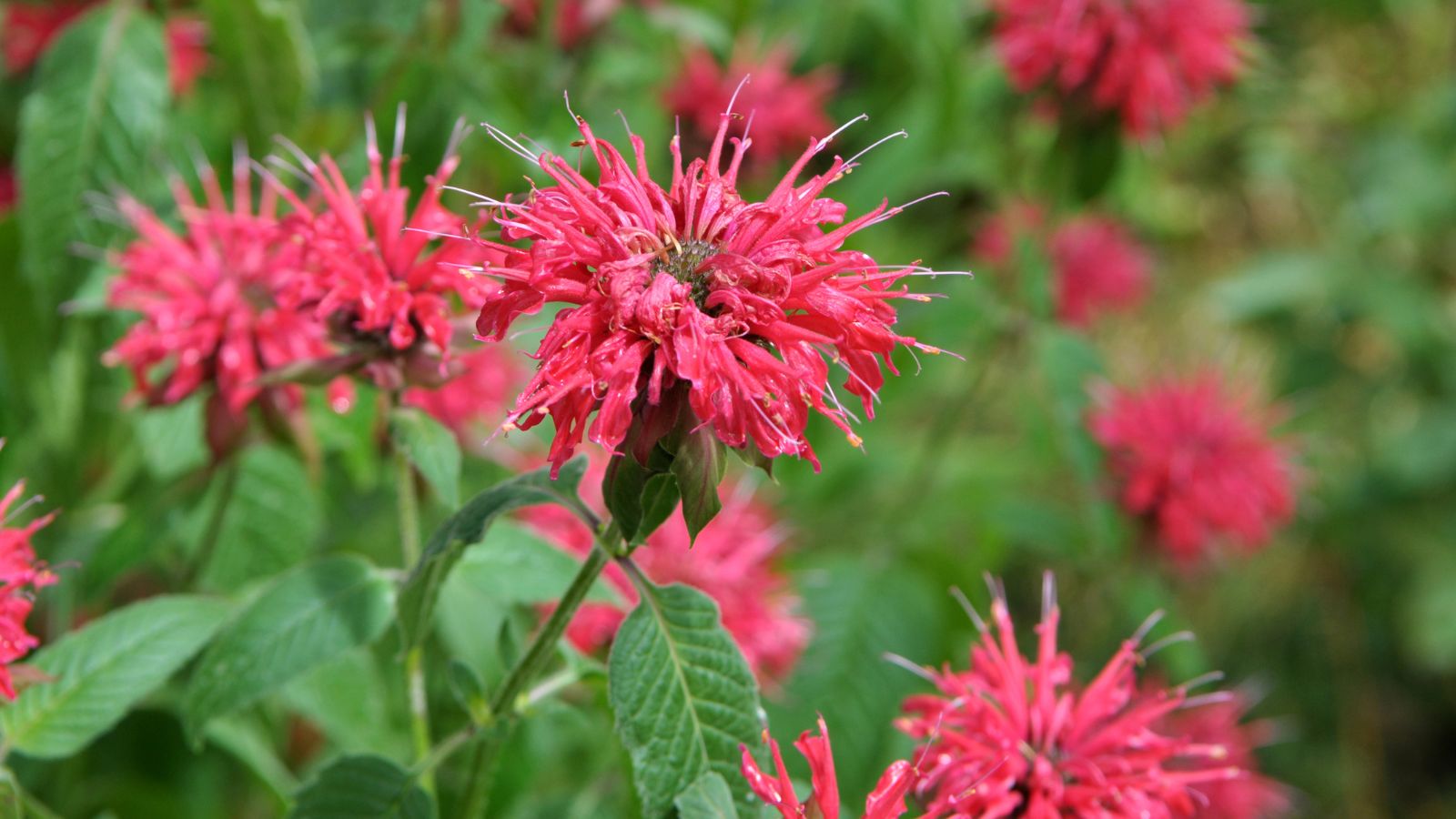
Image Credit: Depositphotos.
Bee Balm features striking fuchsia or purple-hued flowers that contrast beautifully with dark Hibiscus foliage.
While the Petite delight bee balm grows between 10-12 inches tall, it is far shorter than Hibiscus plants. Therefore, it’s a groundcover of sorts that prefers similar growing conditions. However, certain Bee Balm varieties can be invasive, so choose your companion plant carefully.
5. Daylily (Hemerocallis)
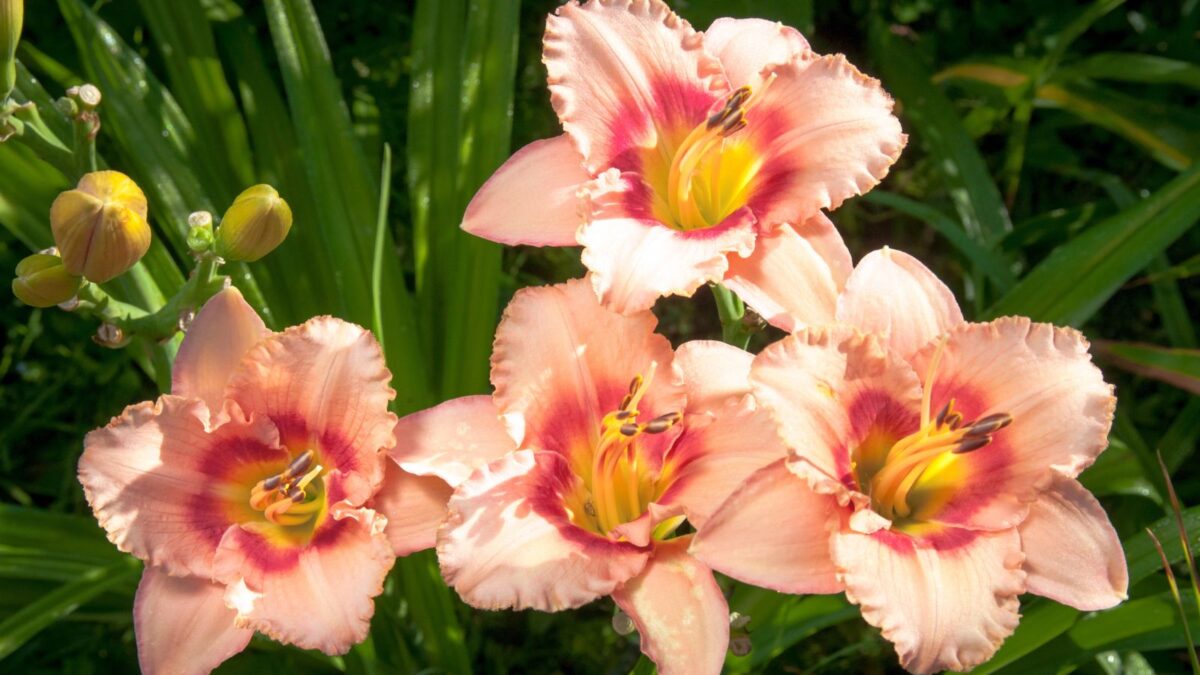
Image Credit: Depositphotos.
Daylilies are incredibly versatile perennials that thrive in the same growing conditions as Hibiscus plants, and they will not compete for space, unlike other invasive plant species.
While they generously produce abundant blooms from summer to winter, their strappy leaves contrast beautifully with Hibiscus plants, even when they are not producing flowers.
Here are the best companion plants for daylilies.
6. Crape Myrtle Shrub (Lagerstroemia)
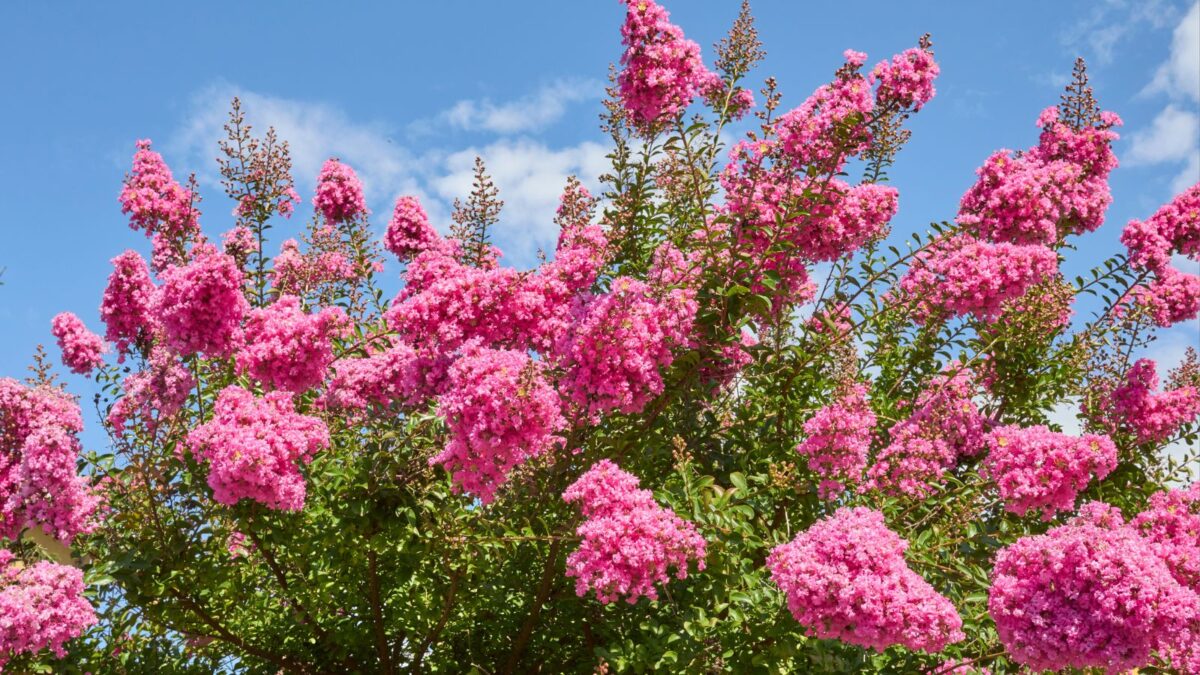
Image Credit: Depositphotos.
Crapemyrtle shrub, which grows 2-5 feet in height and width, makes a great companion to hibiscus, especially for warmer climates.
It flowers more or less at the same time, from summer right into fall, and depending on the variety you choose, can produce blooms that contrast spectacularly.
7. Japanese Anemone (Anemone hupehensis)
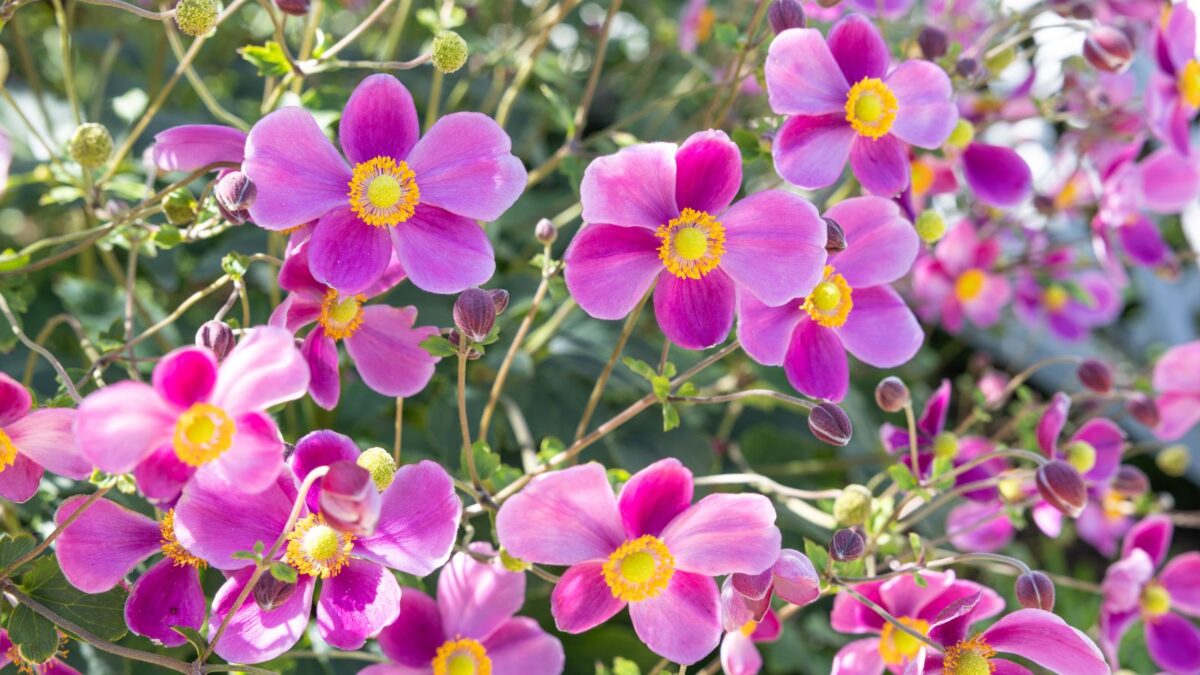
Image Credit: Depositphotos.
The stunning Japanese Anemone is a tall perennial which produces vibrant pink-hued or white rose blooms attached to elegant stems.
While it prefers similar growing conditions to Hibiscus plants, it should ideally grow alongside them as they are tall companion plants, so planting them side-by-side will create a wall of stunning flowers each summer as they bloom simultaneously.
8. Bigleaf Hydrangea (Hydrangea macrophylla)
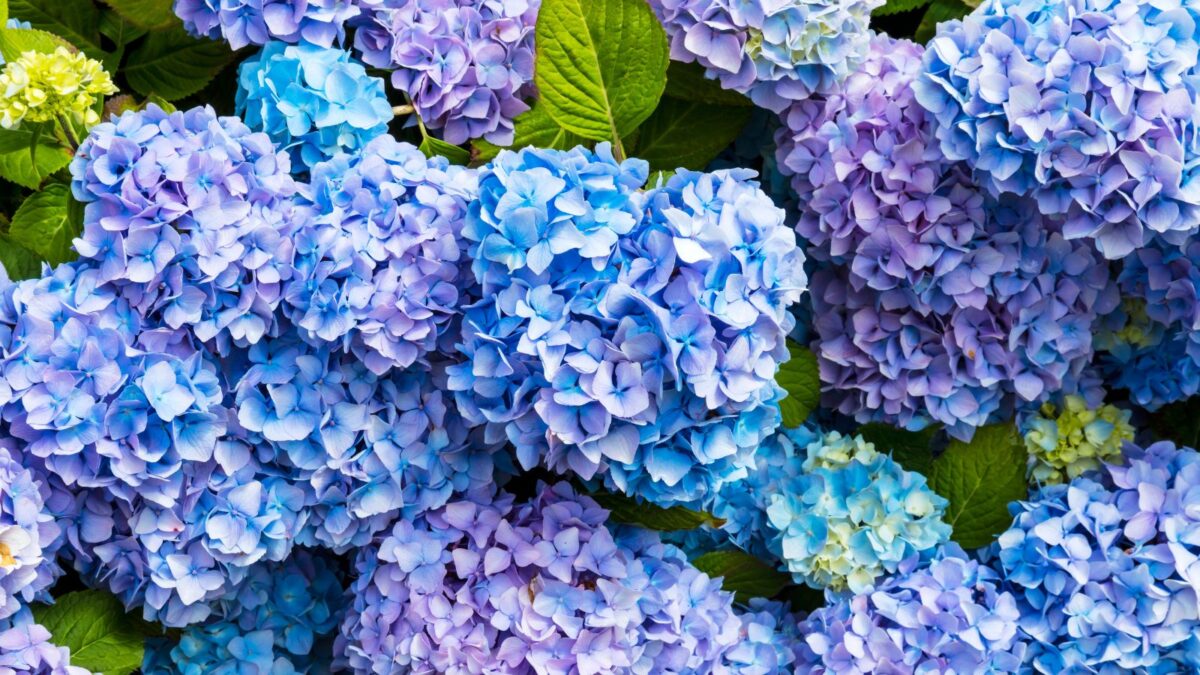
Image Credit: Depositphotos.
Showstopper Hydrangea features a wide array of colored flowers, depending on your soil type ranging from pink and violet to vivid purple shades (see how to change hydrangea flowers color).
While some Hydrangea varieties will stop producing blooms at the same time as the Hibiscus plants, others will bloom before. So, be mindful of their various blooming periods when you select a Hydrangea variety as a companion plant.
For companion planting, place it alongside your Hibiscus as it is a tall plant that would otherwise obscure it, and apply a good layer of mulch at the base of both plants to retain the soil’s moisture.
Check out the best companion plants for hydrangeas.
9. Peonies (Paeonia)
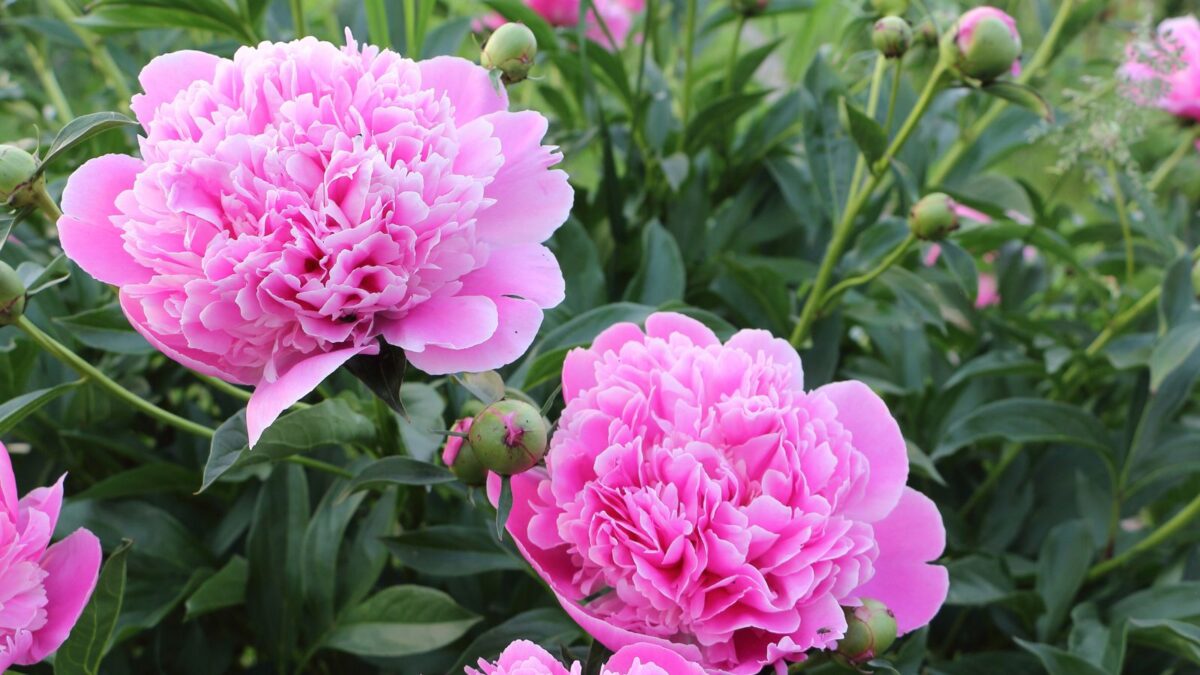
Image Credit: Depositphotos.
Peonies are shrubby plants with large blooms that will steal the show with large, gorgeous blooms each spring and should ideally be placed behind Hibiscus plants so that by the time it is in full bloom in summer, it will hide the Peonies’ withering foliage.
10. Speedwell (Veronica)
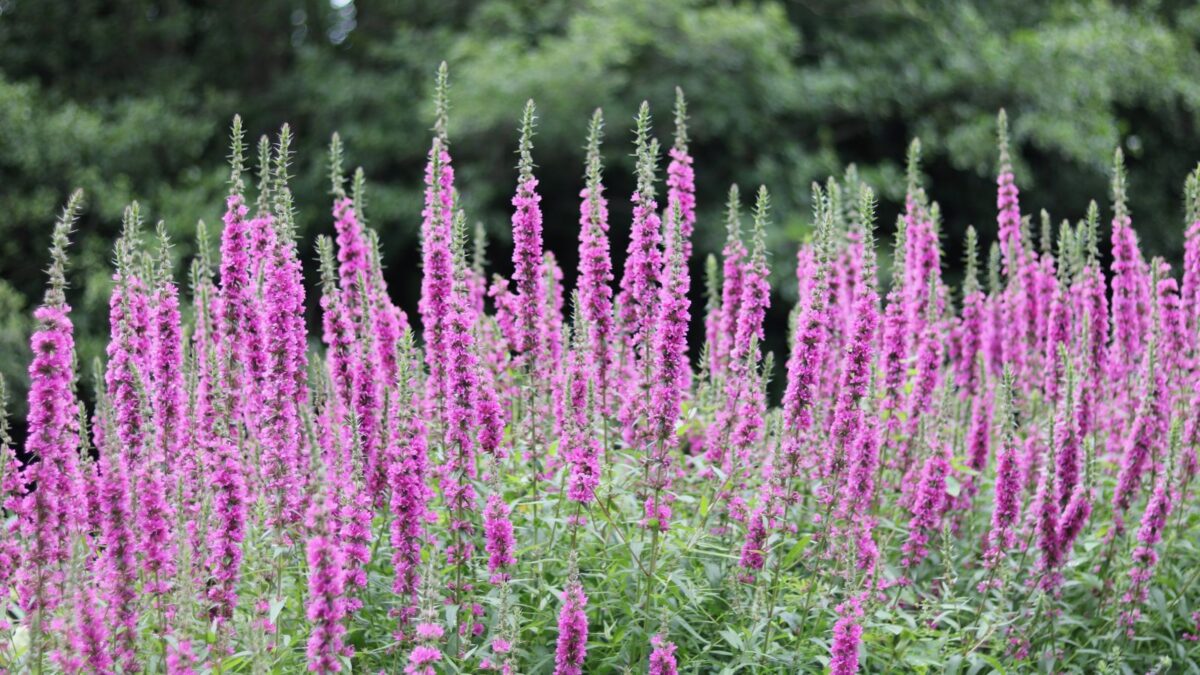
Image Credit: Depositphotos.
Veronica (salvia too!) are ideal hibiscus companion varieties as they can be cut back once they have bloomed.
11. Cranesbill Geraniums (Geranium)
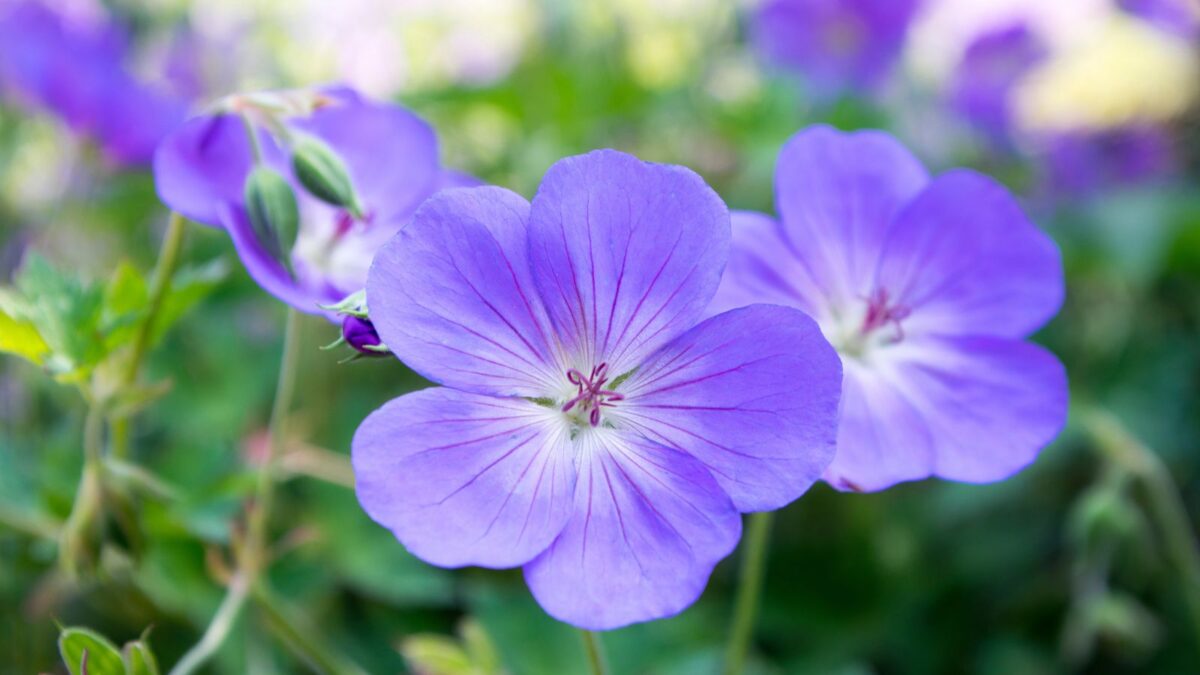
Image Credit: Depositphotos.
Generous low-growing Geraniums are repeat bloomers and hardy plants that can greatly complement the Hibiscus’ larger flowers.
Love geraniums? Here are the best companion plants for geraniums.
Other hardy perennials that are great Hibiscus plant additions include:
- coneflowers
- ironweeds
- ornamental grasses, including fascinating Spider Flowers (Annual cleome) with their ramrod-straight stems and large-sized blooms
What Not To Plant With Hibiscus
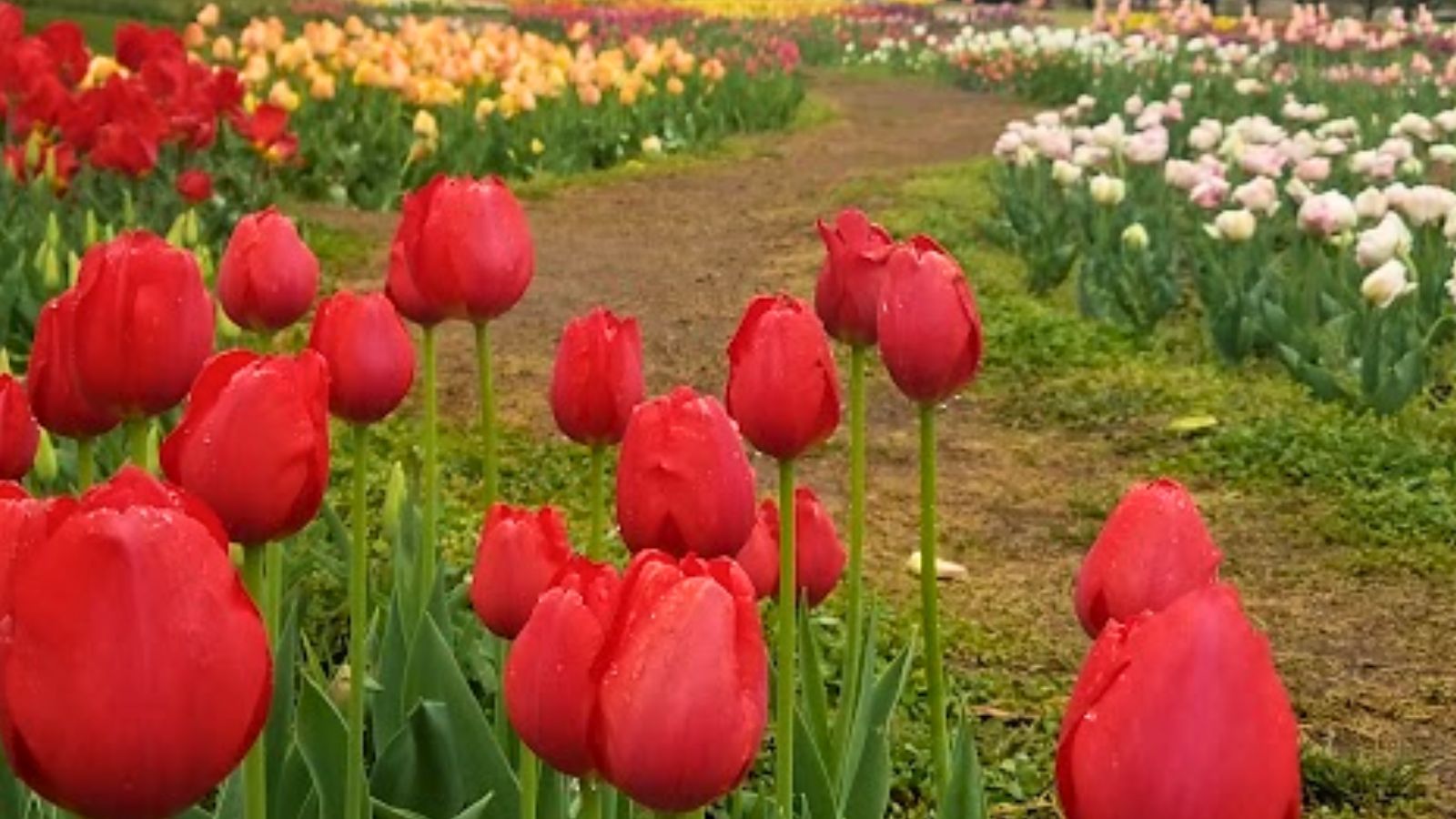
Image credit: Backyard Garden Lover.
While it may seem like a truly clever idea to plant spring-blossoming bulbs under your hibiscus plant, they will most probably rot, so rather plant tulip bulbs that you can simply remove once they have flowered, as they will most likely not bloom in the second year, even if grown in prime conditions.
As you can see, there are many great options for you to consider. While numerous great hibiscus companion plants thrive in similar growing conditions, it’s important to consider what size they will be when they reach maturity. Other key considerations for flowering companion plants include when they produce blooms, especially if you want to enjoy mother nature’s blooming bounty from spring to fall.
Hibiscus companion plants are those that can be planted near hibiscus to provide support, improve the overall health of the hibiscus plant, or deter pests and diseases. Hibiscus companion plants can provide shade and shelter from the wind, help to keep the soil moist, add nutrients to the soil, or attract pollinators. When choosing hibiscus companion plants, it is important to consider the needs of the hibiscus plant as well as the climate and conditions of the planting site. Some common hibiscus companion plants include impatiens, begonias, ferns, and ivy.

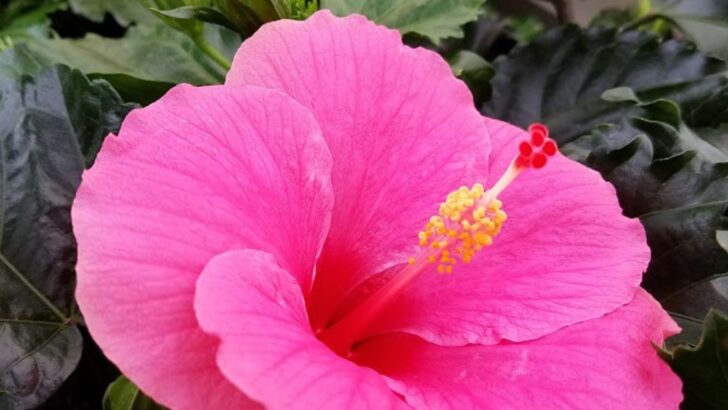

Landscaping With Hibiscus - Ideas For A Stunning Tropical Garden
Tuesday 11th of April 2023
[…] If you’re looking to complement your tropical hibiscus plants with other plants, there are a variety of options that can help create a stunning landscape design. Here are a few plants that pair well with hibiscus: […]
Companion Planting Guide (Including 7 Benefits Of Polyculture)
Wednesday 30th of November 2022
[…] Companion plants for hibiscus […]
How To Prune A Hibiscus - 5 Ways To Trim For Gorgeous Flowers
Thursday 10th of November 2022
[…] out these companion plants for hibiscus and create a garden you’ll fall in love […]